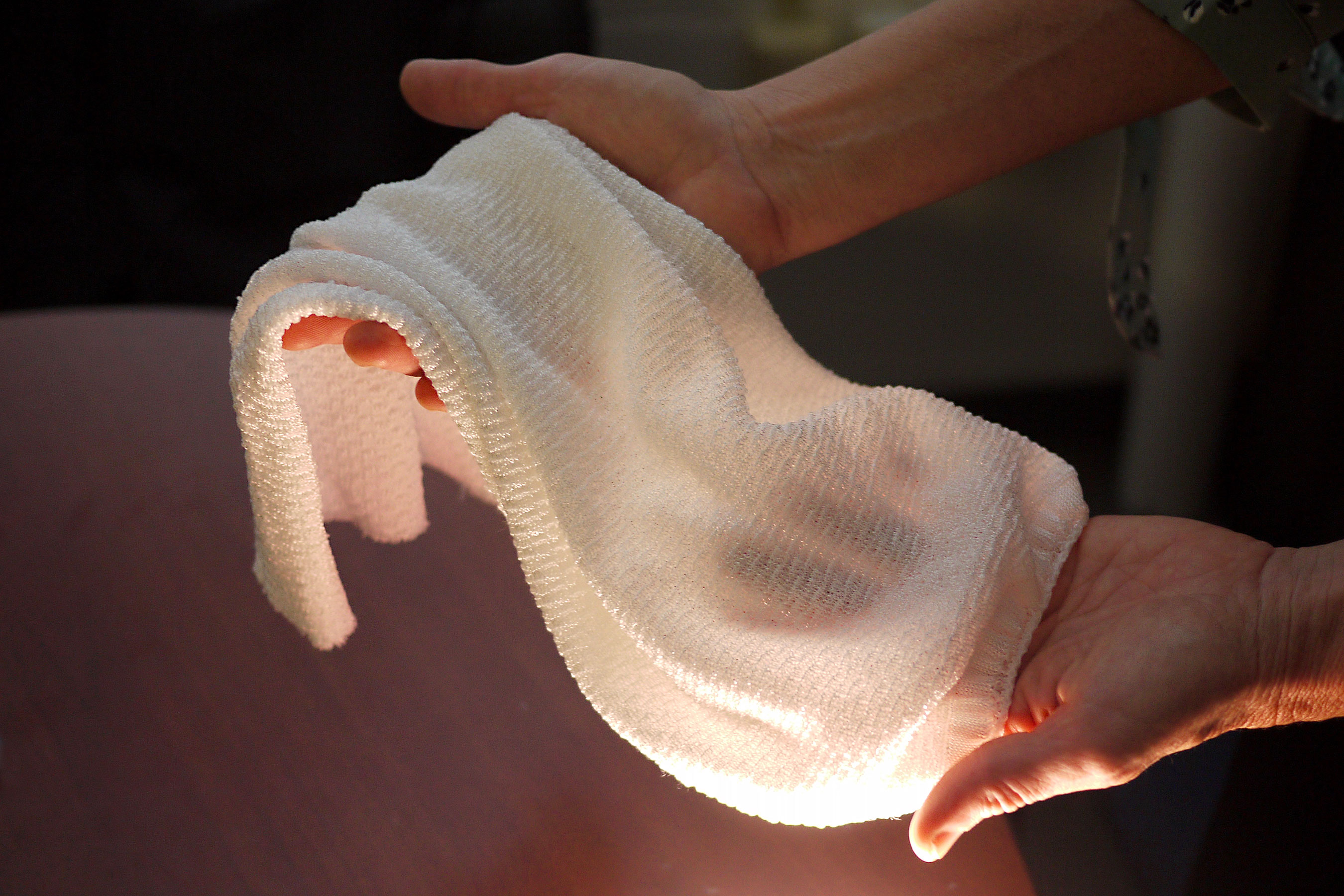This new fabric will automatically cool you down when you get hot and sweaty

Too hot one minute, too cold the next. Anyone who’s engaged in office warfare over the air conditioning can tell you that trying to keep everyone happy is impossible. But what if we all wore clothing that adjusted to us, rather than having to fiddle with the temperature dial?
A new fabric, developed by a team at the University of Maryland, is the first to automatically warm wearers up or cool them down as needed. When you’re feeling hot and sweaty—when playing sports, say— the fabric lets infrared radiation (heat, to you and me) pass through. But when you’re colder and drier, it traps the heat in.
It was created using specially-engineered yarn created with fibers made of two different synthetic materials: one that absorbs water and one that repels it. The strands are coated with carbon nanotubes. Each fiber expands or contracts when the temperature changes.
When the material gets hot and wet—when you’re sweating, for example—the strands twist and warp, tightening it up. This process activates the nanotube coating, which lets heat pass through, almost like the body’s pores. When you’re too cool, this mechanism is blocked, trapping in heat close to your skin to warm you up. The research was published in Science today.
“It recognizes the way your body changes heat in different environments,” says study coauthor YuHuang Wang. “It’s like an antenna picking up changes in temperature and moisture.”
A team at Stanford created a similar fabric in 2017, but you had to reverse the garment to feel the effect.
Who will be the first people to wear clothes made from the material? Athletes, perhaps, but it could be useful for infants, people with disabilities, older people—anyone requiring constant attention to ensure comfort, Wang says. There are yet to be full user tests, but the team says it feels like normal fabric.
Wang reckons it could be in production within months. One thing that might make that more likely: the material can be knitted, dyed, and washed just like any other fabric, which should make it more attractive to the average consumer. Roll on, summer.
Deep Dive
Biotechnology and health
How scientists traced a mysterious covid case back to six toilets
When wastewater surveillance turns into a hunt for a single infected individual, the ethics get tricky.
An AI-driven “factory of drugs” claims to have hit a big milestone
Insilico is part of a wave of companies betting on AI as the "next amazing revolution" in biology
The quest to legitimize longevity medicine
Longevity clinics offer a mix of services that largely cater to the wealthy. Now there’s a push to establish their work as a credible medical field.
There is a new most expensive drug in the world. Price tag: $4.25 million
But will the latest gene therapy suffer the curse of the costliest drug?
Stay connected
Get the latest updates from
MIT Technology Review
Discover special offers, top stories, upcoming events, and more.